Reinterring Black remains in Newburgh has taken a decade. What it reveals about NY history
Their bones are being stored in a locked storage room on a college campus in New Paltz.
Each person, their remains unidentified, is wrapped in acid-free tissue paper, sealed in a labeled Ziploc bag and placed in a cardboard box, according to the professor who shepherded the team of researchers.
In 2008, the graves of more than 100 men, women and children, buried over two centuries ago, were unearthed from an African American burial ground discovered under what is now the city of Newburgh's courthouse. The remains of 99 of them were sent to the State University of New York at New Paltz to be studied and preserved.
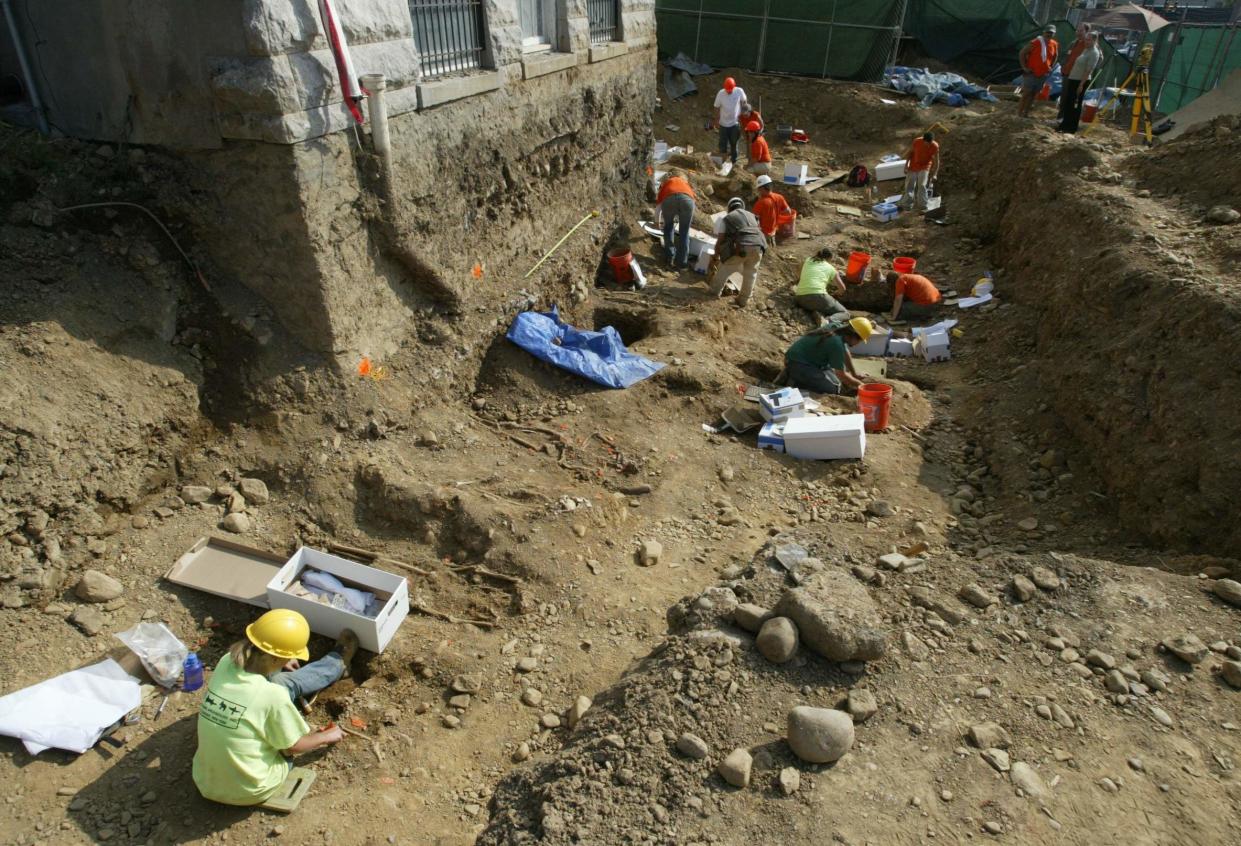
The hope was that one day the city would reinter the individuals once a location was chosen and a memorial built. Fifteen years have passed, and the remains haven't been moved.
"We've had several city managers since 2008," said Gabrielle Burton-Hill, a member of the Newburgh Colored Burial Ground Committee. "As soon as the committee would take two steps forward, we get a new city manager, and then it'd be put on the back-burner again."
Two years ago, the city council passed a resolution to create a memorial at Downing Park.
The city, led by its first Black mayor and administered by a Black city manager, is moving the project forward now. Consultants are working on finalizing the design for the memorial, even though the park, where the bones will be reinterred, is asking for more time for public input.
"As the stewards and advocates for Downing Park, the Conservancy is asking that there be an official public process to discuss the memorial," stated Downing Park Conservancy Board Members, which maintains the park where the memorial is to be built. The conservancy was originally called the Downing Park Planning Committee.
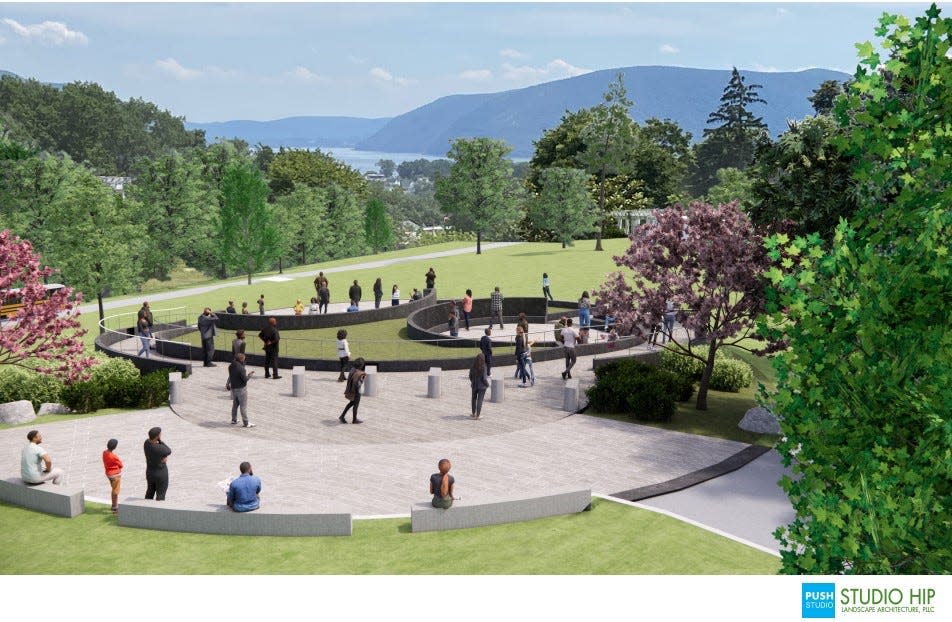
The city's burial site isn't the only one in the Hudson Valley making its way through a slow, and sometimes haphazard, process to document, preserve and memorialize the hidden history of Black people in New York. The process is marred by land ownership issues, fundraising, planning challenges, and for some, having to navigate a system made up of mostly white decision-makers.
"If you're practicing, where you know, you're not saying that this is racism, but there is that invisible 'whites only,' or 'coloreds only' signs, that's what I fight against," said Burton-Hill, who has been a Downing Park committee member since 2018.
Each reclaimed Black burial site adds 'piece of the puzzle'
The locations of many of the cemeteries in the Hudson Valley have been known for decades. But the push to preserve these spaces and the remains buried there took on new urgency after the death of George Floyd, which threw a spotlight on police brutality, racism, social justice and how Black history is taught.
In 2022, Congress passed legislation authorizing the National Parks Service to create a program meant to offer $3 million in grants for the identification, preservation, and documentation of these sites.
New York recently adopted the Unmarked Burial Site Protection Act, which provides a process for how remains and artifacts are treated when discovered on private land. In Dutchess County, four of the 11 Black burial sites are on privately owned property, and two sites are described as "disintegrated" or "no longer identifiable," according to the Dutchess County Historical Society.
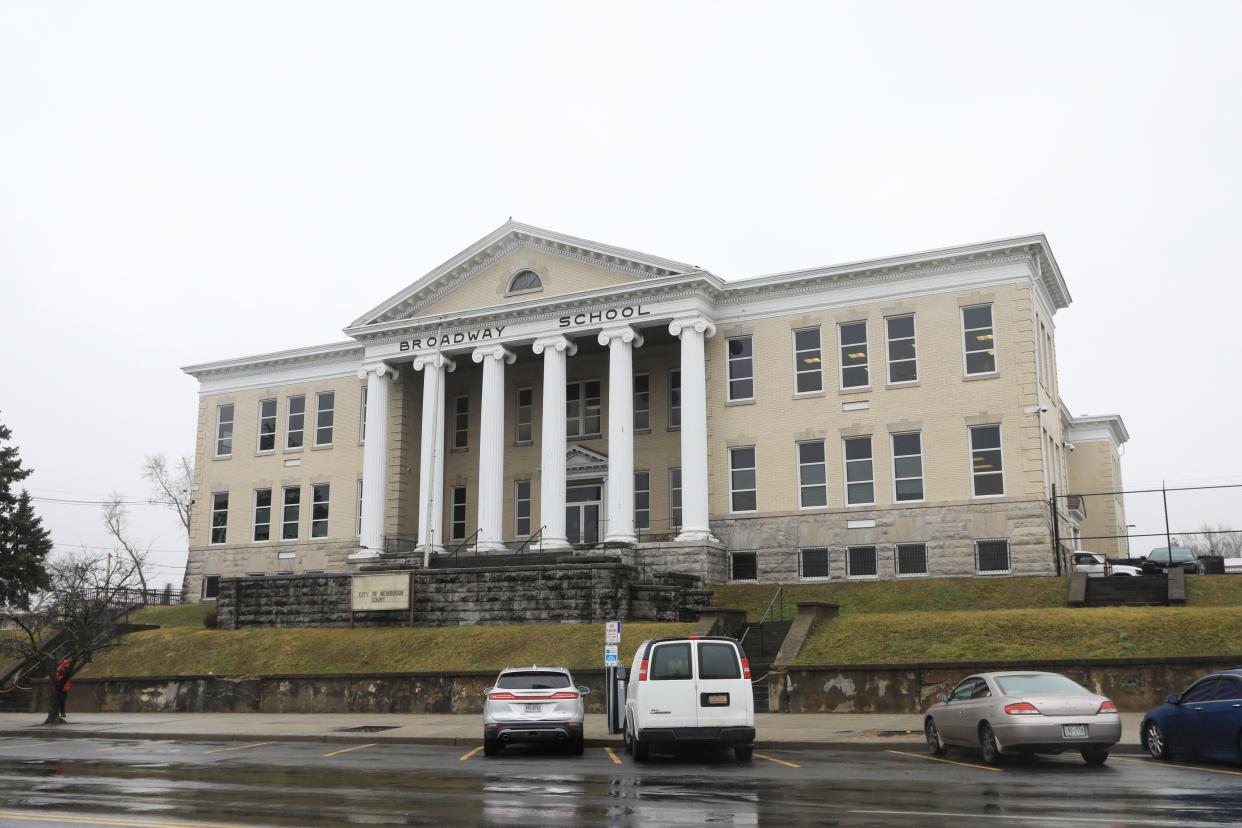
One of those two sites is in the city of Poughkeepsie, which, like Newburgh, has a high concentration of the area's Black and minority population. Caskets were discovered at 204 Main St. in the 1800s, according to the historical society's website. The property has since been developed into apartments and small businesses.
In the town of Montgomery, residents have been working to create a memorial at an African-American cemetery that was registered with the National Park Service in 1996.
A warehouse overlooks the wooded parcel of land. Trucks use it as a turnaround. Heavy tire treads mark the entrance of the makeshift memorial.
White pipes, barely visible from afar, mark the location of the remains of at least 171 enslaved and formerly enslaved people buried on less than one acre of land. The group leading the effort, Sacred Place of My Ancestors (SPOMA), says it has been working to raise funds and identify property owners adjacent to the cemetery.
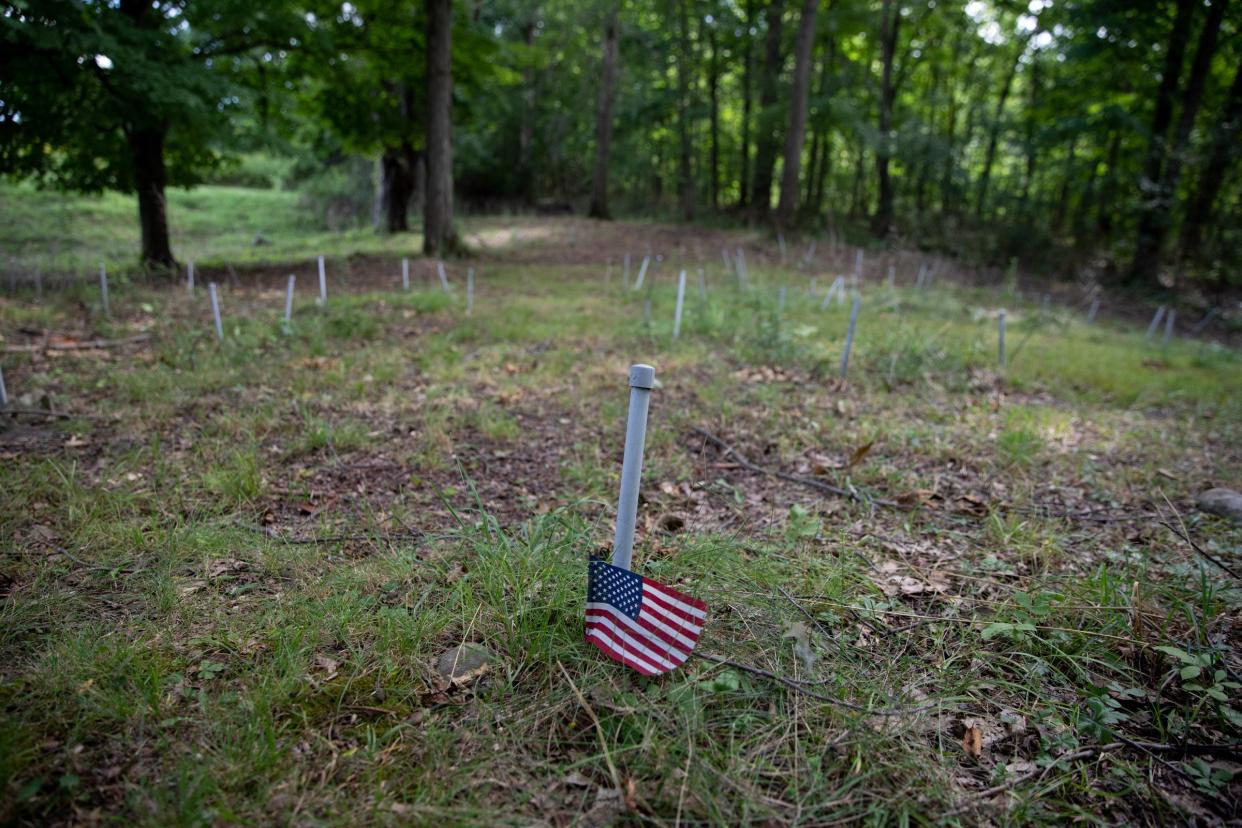
In Kingston, Harambee, the group working on memorializing the Pine Street African Burial Ground, expects their process to take about another decade — they're committed to also identifying and preserving the remains. The cemetery where enslaved people were buried was rediscovered in 1990. Harambee took over the deed, with help from the Kingston Land Trust, in 2021 when the property was going through foreclosure.
"Each individual burying ground has a connection to the next one. Newburgh helps us to confirm the research from Montgomery, New Paltz, (and) Kingston," said Michael VanDervoort, who has researched archived records to piece together history for the Newburgh and Montgomery projects. "Each one a piece of the puzzle when fully assembled helps to clarify the picture of what really happened here in the Hudson Valley."
Newburgh remains may never be identified
VanDervoort collected the names of 66 people presumed to have sought relief from the Newburgh Alms House from 1853 to 1858. Of those, nine asked for burial relief.
The list is a snapshot of the population that might have been served by the cemetery found under the city's courthouse.
Next to each name is a note.
Application for burial, employed as waiter Orange Hotel many years.
Brother made application for funeral expenses, toes frozen & consumption.
Application for coffin & burial, never had assistance from (town).
Burton-Hill said the decision not to conduct DNA testing, which may have helped identify the individuals and their descendants, was made because of the cost and the fragility of the remains.
They were discovered in 2008 when the city moved to turn an old school building into a courthouse. The Black cemetery was known to the city prior to the school building's construction, having been marked on a map from 1869 and referred to in other archived documents.
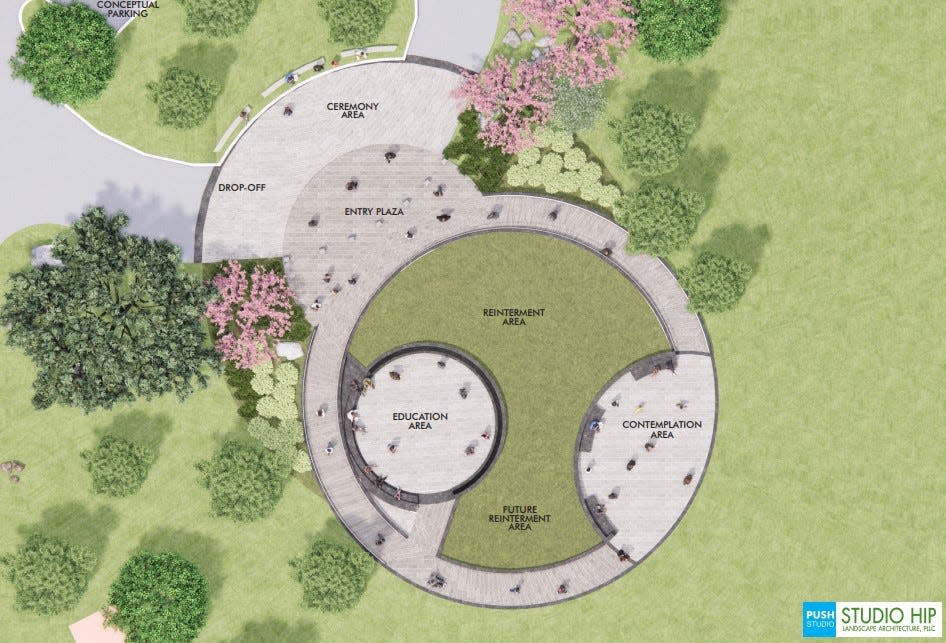
More than 100 graves were discovered, and 99 remains could be recovered. The condition of the skeletal remains was already disturbed due to previous construction. Some of the graves were severed by utility lines, bones protruded from the walls, and the remains lay inches from a sidewalk.
Burton-Hill visited the anthropology department at SUNY New Paltz, three years ago, where the remains are kept. The city had requested the research services of the school, where anthropology professor Kenneth Nystrom and his team documented, studied and preserved the remains.
"Walking into that room, I felt a sense of responsibility and also a sense of disappointment that it had taken that long for me to get there," Burton-Hill said.
However, there is one name that Burton-Hill hopes will adorn the project at a later phase. Effie Smith was an enslaved Black woman who worked at the William Smith Farm, which was then turned into Downing Park. Burton-Hill would like to see the pergola, now neglected and covered with graffiti, turned into an event space or even a museum under Smith's name.
"There is no Black representation, there is no solid Black history in the city of Newburgh, and we've been here forever and now is the time for us a society to right some of those wrongs," she said.
'This has been a long, long haul'
Burton-Hill, a restorative justice practitioner and community organizer, joined the Newburgh Colored Burial Ground Committee in 2018, about a decade after its creation. The committee is made up of four people of diverse backgrounds, some who are original members.
"Lucky for me, I happened to come along when we had a very stable, minority-led city council and mayor, so it was easy for me to get things done," she said. Since then, the committee has done its due diligence in making sure the community was heard and the process inclusive, according to Burton-Hill.
During a council meeting in February, Studio HIP Landscape Architecture gave the council an update on the design. The circular style included an education area and a semi-circle contemplation area, an entry plaza and ceremony area.
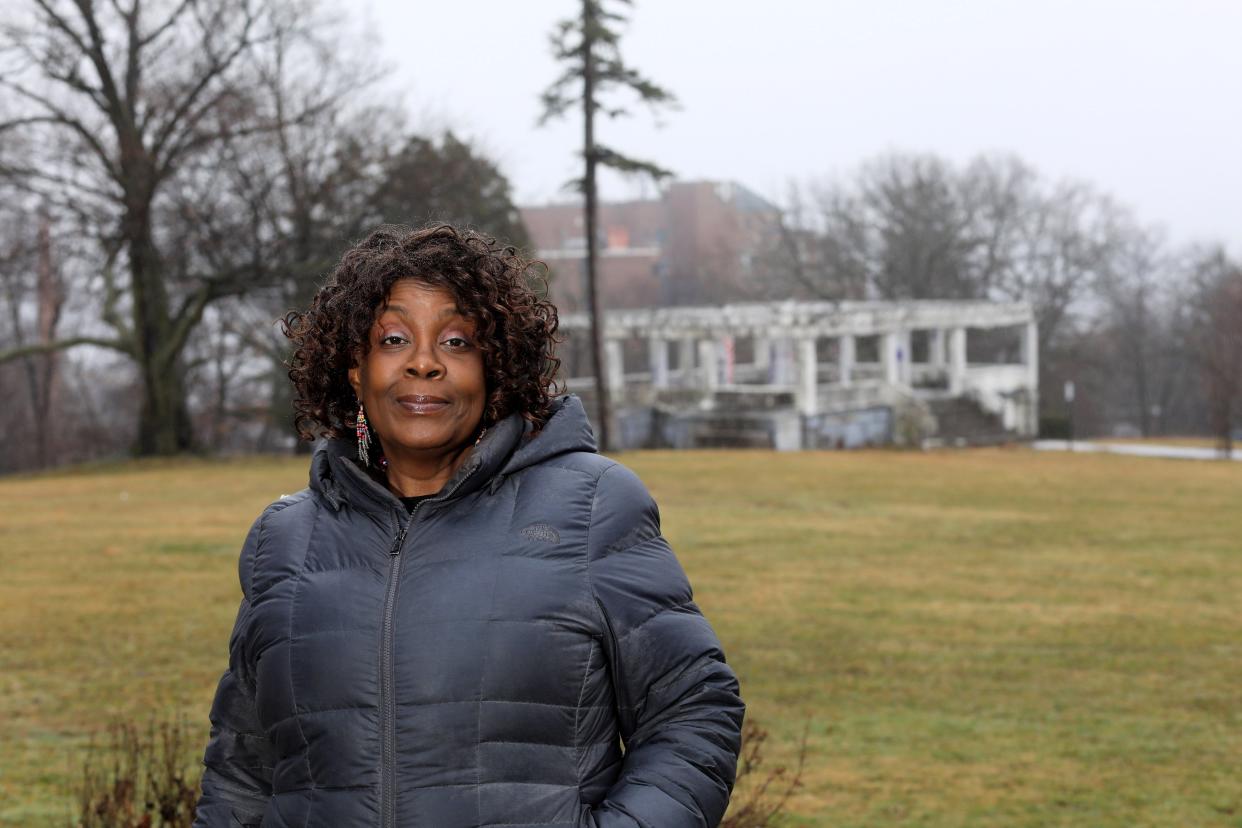
The next steps are a final design presentation and putting the project construction out to bid. The estimated cost, up to this point, nears $100,000, with up to $82,862 allocated for design services and $15,000 toward the preservation and documentation of the remains. The city would not provide the Journal with how much funding it has allocated to this project, but the hope is to have it completed by 2025.
"This has been a long, long haul," said City of Newburgh Mayor Torrance Harvey at the February council meeting.
Both Downing Park Conservancy and Olmsted Network — the national organization to protect parks designed by Frederick Law Olmsted and the Olmsted firm, including New York City's Central Park and Downing Park — have asked the city to allow for more public input into the decision-making, specifically the location decision.
"The design team's plan specifically states that a public process will be held before moving forward with approving a design, however, this has not happened and there are no plans for public participation in the timeline before approval," said Downing Park Conservancy in a statement.
Olmsted Network President Anne Neal Petri expressed concern about the cost of maintaining the memorial and also the need for DNA testing to identify possible descendants in a letter to the city. The organization is not opposed to having the memorial in the park. Petri suggested other locations in the park that would have less impact on the landscape.
"The city has held multiple public input sessions and received public comment throughout," said Mike Neppl, chief of staff for the city of Newburgh. "It is time to move the process forward and bring respectful closure to our community with one of the most historically significant and beautiful memorials in the Hudson Valley."
Neppl said the steering committee included a representative from Downing Park Planning Committee, though the conservancy contends it has been part of the process "to choose the spot for the memorial or issue the RFP for the design."
"The city created this harm, and the city is going to pay for this harm," Burton-Hill said. "We're not taking any shortcuts."
Saba Ali: Sali1@poughkeepsiejournal.com: 845-451-4518
This article originally appeared on Poughkeepsie Journal: Newburgh memorial reveals uphill battle to preserve Black cemeteries
